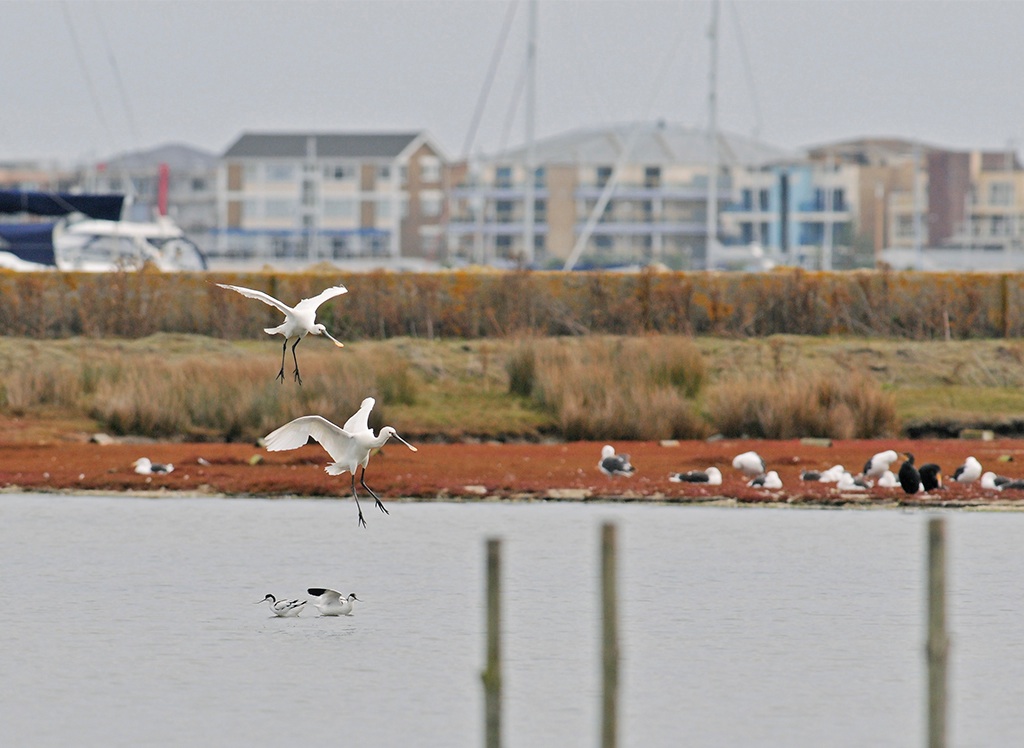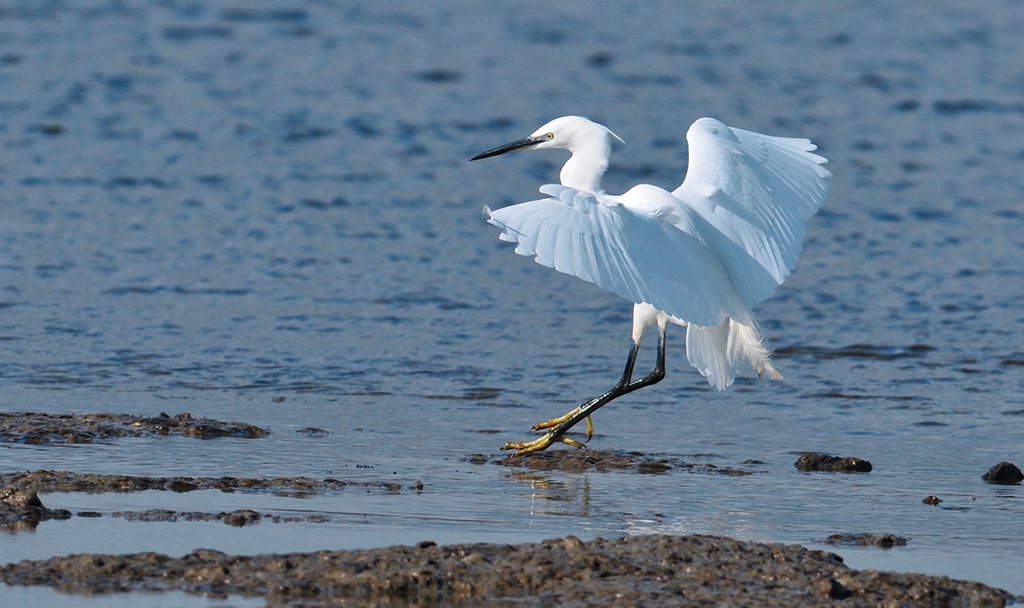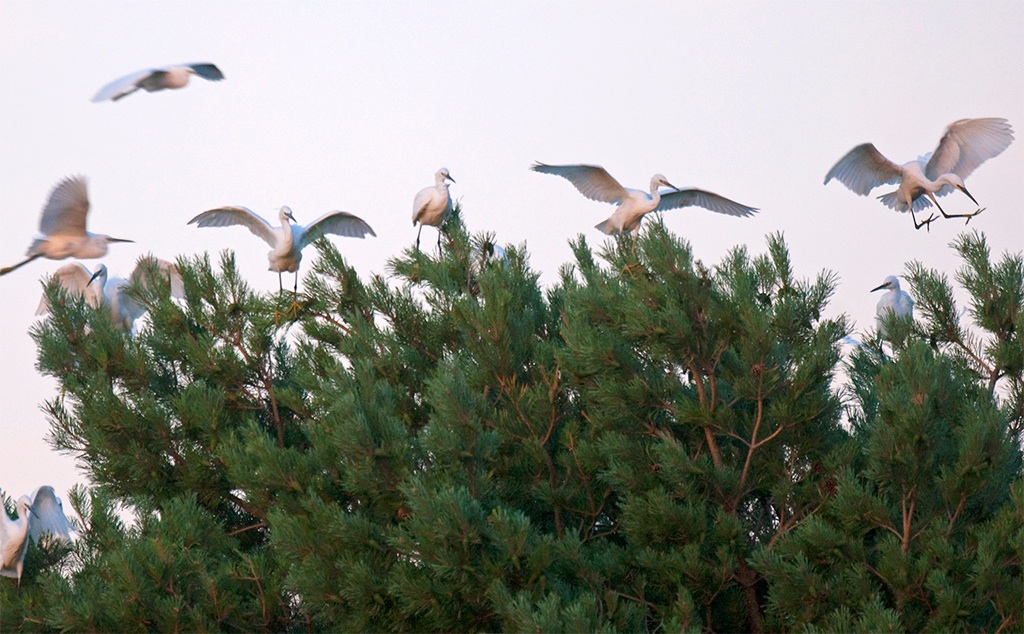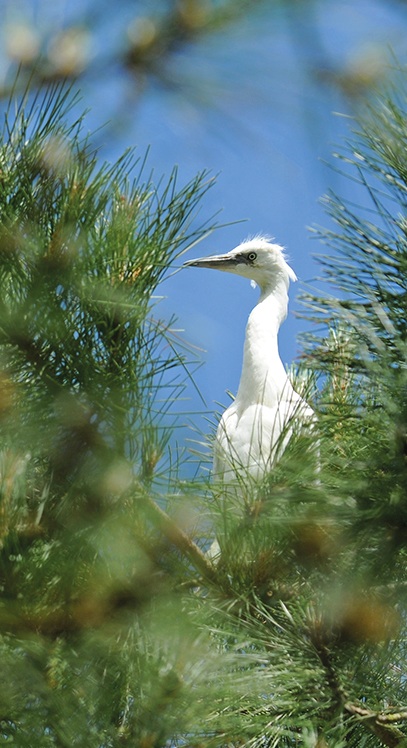Neil Hagger didn’t have a comfortable relationship with the police. Handsome, his face slightly scarred from a car accident, he looked roguish. We spent several summers in the early ‘80s driving through the night together, surveying owls in Poole Harbour.
The prize amongst the shadowy copses with hooting Tawny Owls was the secretive Long-eared Owl. I had previously found Long-eared a few miles out of Dorchester, and had read of birders in Norfolk finding nests by listening for the young’s far carrying calls. In Poole Harbour, Long-eared Owls had bred at Arne and Studland between the wars but seemed to have become really rare. Or had they? Perhaps if Neil and I systematically worked the harbour on warm, windless summer nights, we could find them.
Two men driving around in the middle of the night, pulling up and standing listening near isolated copses and cottages regularly attracted the police. ‘Birdwatching’ really wasn’t an adequate excuse in the dark, and Neil was usually antagonistic and occasionally sarcastic. I tried to encourage a calmer approach. “Just wind down your window, explain what we are doing and ask the officer how you can help”, I would suggest.
Long-eared Owls like to use old crow nests, particularly in lines of conifers, and the British Gas oil gathering station at Wytch looked promising. One moonlit night, Neil decided he wanted to photograph the bright lights of the site through the evergreens. I was busy so he took his friend, Mark ‘the gas fitter’. Driving up the private oil roads, he parked the car, opened the boot and got out his tripod and camera. Suddenly a Land Rover with lights at full beam had him in its glare. It pulled up and out jumped two security guards who demanded to know what he was up to. Neil gave a typically sardonic answer about working for British Gas, waved his tripod and said that if they came any closer he would zap them with his super ray gun. Surprisingly, they drove off. Neil took the pictures and was driving back through Corfe when three police patrol cars swooped. He wound down the window ready to explain, but they wrenched open the door, pulled him out of the car, slapped his hands on the roof and spread his legs. With no apparent sense of irony they then asked, “Right, which one of you has the super ray gun.”

Eurasian Spoonbills Platalea leucorodia and Pied Avocets Recurvirostra avocetta, Brownsea Island, Dorset, 4 October 2009 (Claire Lodge). Looking towards Poole.
Neil had his film confiscated and we never found nesting Long-eared Owls, but I did get a taste for birding on the western shores of the harbour. On 29 August 1993 after a pre-work search for Aquatic Warblers at Swineham, I was relaxing on the train back to Poole. On reaching Holton Heath, I noticed a cloud of gulls that had just been put up in the channel. My heartbeat quickened because this usually meant a raptor. Frantically searching through the melee, I found the culprit. It was an Osprey. Phones had just been installed on trains so I experimented with a call to Hamish, and as I continued to London he rushed down to the Holton shore and saw it. Osprey must have bred in the harbour for 2,000 to 3,000 years, and there are records of breeding birds nearby on the Isle of Wight until 1557. Around that time fishermen and gamekeepers began to see them as competition. With their huge nests and habit of roosting out in the open, killing them was easy. Only in Scotland did breeding Osprey hang on right through to 1908.
If you would like to see an Osprey fishing, go to Ham Common, the urban nature reserve just south of Rockley Caravan Park, in the early morning (around 08:30) in August or September. If you look southwest with the sun behind you up this beautiful broad stretch of water, you will see two small islands and beyond them the church tower of Lady St Mary at Wareham. Suddenly in the distance the gulls will fly up. You’ll scope the flock and find an Osprey fishing, just as I saw one from the train.
After the National Trust built a hide at Middlebere Farm, we discovered Ospreys roosting in the bare trees on the south side of Arne. Knowing the roost, we could watch the birds leaving in the morning to patrol the edge of the Holton shore and elsewhere in the harbour. Strangely, they often flew very high in the sky.
When in Poole Harbour, Ospreys eat Thin-lipped Grey Mullet. Weighing around a kilo, the mullet appear in the harbour in May. As the waters warm up they develop a habit of lying near the surface of the water as if sunbathing, making them an easy catch. The mullet normally disappear in November, and the fishermen at first thought they moved to warmer seas followed by the Osprey, but a few shoals have been found hibernating locally in deep water out of reach. You won’t find an Osprey in the harbour after this time.
Curious, I asked Dick Forsman how Ospreys see fish from so high up. “They can’t see fish from that high, so they are probably defending a territory.” He explained that females leave their young with the males at the breeding grounds, then come to sites like Poole Harbour to claim the fishing rights. The males and juveniles then join the females in late August. Intrigued, I began sexing and aging Poole’s summer Ospreys and confirmed that the early birds did all look like females. Whenever I have seen three together, they have always turned out to be two adults and a juvenile.
I wondered where the harbour’s Ospreys were breeding. Ospreys first reappeared in Scotland in the mid-‘50s, and by 1966 there were at least three pairs. We had only three records in the 60 years before 1966. Then a bird arrived in Poole Harbour on 17 August that year, staying until 3 September. We have enjoyed Ospreys in late summer and early autumn most years since. I think that Poole Harbour is a favoured fishing site for Scottish Osprey families feeding up before migration. We can be sure that Scottish Ospreys pass through, because Roy Dennis radio-tagged one (SO6) that flew straight through Poole Harbour on 19 August 1999, then again on 2 April the following year.
Ospreys may soon be spending much more time in the harbour. Seven nest platforms have recently been erected at various sites along the Wareham Channel, some complete with their own polystyrene birds. It is hoped that these will be enough to entice future birds down to stop and breed.
At one time, egg collectors were a reserve warden’s main preoccupation, and the thought of protecting an Osprey nest would have been a nightmare. Some of Poole Harbour’s wardens have been put to the test before. Take Tony Wise, the first warden of Brownsea Island Nature Reserve.
On 10 July 1982, Tony wasn’t happy. I can’t remember how I got to see what was then a very rare Little Egret, sitting in a tree on Brownsea’s West Lake one Saturday morning, but I do remember that Mo came with me on the Sunday and I returned with George Green on the Monday. By then it was sitting out with the Grey Herons, giving great views, as was a Hobby nearby. By the following Saturday it had become a bit of a focus for visiting birders. With a Squacco Heron in Weymouth, two Spoonbills at Brownsea and the Little Egret staked out, there was a chance of four ‘herons’ in a day.

Little Egret Egretta garzetta, adult, Bramble Bush Bay, Studland, Dorset, 15 March 2010 (Nick Hopper)
Being members of the Dorset Naturalists’ Trust, George, Mo and I were allowed access to the reserve, as were Ian and Janet Lewis and Paul Harvey. When Tony found four other twitchers hidden in his freshly creosoted hide, he was livid and demanded that the ‘trespassers’ join the trust. Three did but one refused, so Tony attempted to ‘arrest’ him. “It was brilliant”, said Ian, “with Tony banging his walking stick on the ground as he attempted a citizen’s arrest, demanding Paul Harvey act as a witness, which was awkward for him because he was friends with the fellows concerned.”
Little Egrets would not remain rare for much longer. The first large influx occurred in 1990, when 14 visited the harbour. By 1995 our coordinated roost count at Brownsea, Little Sea and Arne had recorded up to 84 birds.
A few of these looked very young with obviously shorter wings, and it was difficult to comprehend how they could be flying across the Channel. Surely they must be breeding locally. Everyone was now on the lookout for the first British breeding pair. I remember in August 1996 watching egrets at Seymers on the northwest end of Brownsea, with an adult sitting in the trees watching as a juvenile tried to fish, mantling its wings to create a shaded hunting area, and stabbing repeatedly.
On 18 October 1997, I was really shocked when the Guardian announced that Little Egret had bred for the first time in Britain, with two pairs raising three young on Brownsea in 1996. Had I been watching the first British parent and fledgling Little Egret to breed in Britain for 500 years?
Later, I had a little moan about being kept in the dark. Kevin Cook told me that he was amazed I hadn’t heard them. He had a point, and a little further down you will hear why I should have noticed. Still, it could have been worse. While ringing at Lytchett one night, Ian Alexander’s fellow ringers secretly put a white plastic heron between the nets. It worked a treat as they watched Ian creep along on his belly in the dark and throw a sack over it. Within four years, 46 pairs were breeding in the tall pines at Brownsea.
By now it seemed that the roost opposite Len’s triangular hide at Little Sea held most of the harbour’s post-breeding Little Egrets. It still does. Arriving each evening up to two hours before dusk, the birds fly in over the Studland ferry road. Some feed around the roost, while others sit on the top like sentinels (CD1-32). Numbers peaked at 197 on 14 October 2001.
CD1-32: Little Egret Egretta garzetta. Little Sea, Poole Harbour, Dorset, England, 21:13, 26 August 2010. Calls at a roost as newcomers arrive. Background: Common Blackbird Turdus merula. 100826.AB.211300.12
Brownsea heronry was established in the early 1800s but deserted when the island’s human population peaked and all the trees were felled to make way for farmland. The heronry moved to the Arne peninsula until wartime training disturbed it and it returned to Brownsea. The wonderfully eccentric Bonham-Christie wouldn’t let anyone on to count the birds, but in 1961 she met her match, when a frustrated Angela Hughes flew over the island in a small plane and counted between 30 and 40 white-spattered Grey Heron nests. Not that it would have been any easier from the ground. Grey Herons nest high in the pines from early March through to July, so any sort of systematised count is very difficult.
Once the Dorset Naturalists’ Trust took charge of the heronry, it remained protected from disturbance, and only John Follett was allowed in to do the census. When Grey Heron numbers peaked in 1971 with 131 pairs, Brownsea was Britain’s second largest heronry. Sadly, it would never make it to the number one spot, and within 40 years there were no breeding herons or egrets on the island at all.

Little Egrets Egretta garzetta, Little Sea, Studland, Dorset, 23 August 2010 (Arnoud B van den Berg). Arriving at roost in evening (CD1-32).
The reason? Ravens, or more specifically a young pair of Ravens that took up residence on the island. Being themselves rare birds in Dorset, Ravens were protected and as a result were starting to flourish around the harbour. The young pair on Brownsea, however, were to become notorious, after nesting in the Castle grounds. Imagine everyone’s horror when they started feeding their young with Little Egret chicks. They pushed the Egrets and Grey Herons off the island, and the island’s heronry became abandoned. In 2012, Grey Herons have returned to breed again on Brownsea.
Things do seem to go in cycles, and it was Arne that picked up the baton, with the Grey Heron colony, now including Little Egrets, re-establishing itself on the peninsula. With permission, Nick and I recorded there last summer and were treated to some amazing gargling calls (CD1-33). Over the past three years the colony has remained stable with around 20 pairs of Grey Herons and 20-25 pairs of Little Egrets.
CD1-33: Little Egret Egretta garzetta Arne heronry, Poole Harbour, Dorset, England, 05:00, 3 June 2011. Loud calls of an adult arriving at the colony, followed by cackling of another adult, and harsh calls of nestlings. Background: Common Chiffchaff Phylloscopus collybita. 100603.MC.043200.01
In the past, if you wanted to see a Spoonbill there might be one or two birds about, perhaps an adult and a juvenile at the entrance to Middlebere, or along the southern shores of the Wareham Channel, roosting in Arne Bay or most regularly Brownsea on the lagoon. That was the situation for 70 years.
Numbers started creeping up from 2003 onwards, then suddenly in October 2007, as if word had got around that it was safe to come back, there were 26! I had a phone call at home and rushed upstairs to where I could see across to the lagoon 4 km away, to count the white ellipse-shaped blobs through my telescope. A 27th bird was present at Middlebere at the same time.

Little Egret Egretta garzetta, chick on nest, Arne, Poole Harbour, Dorset, 13 June 2010 (Nick Hopper)
Mo is more observant than I am, and while returning in a queue of cars along the Wareham by-pass in summer 1985 she saw a yellow-billed egret feeding with cattle. Thinking that Little Egrets don’t have yellow bills, she mentioned it to me and we rushed back but couldn’t relocate it. It would have been Poole Harbour’s first Cattle Egret, but that milestone had to wait until one was found by Nigel Symes at Ower on 26 August 1996. This one was only seen in the summer, so we were initially surprised to read in the bird report that it had been roosting with the Little Egrets until 29 December on Little Sea (observed by Stephen Morrison).
Poole’s younger generation of birders had to wait until 30 July 2001 to unblock this species on their lists, when one was found by Eddie Thorpe and identified by Langton Steve Smith at Middlebere. A pattern seems to be emerging here. One or two scouts are followed by a small invasive force, then breeding. An unprecedented UK invasion started when Shaun was doing his rounds at Lytchett Bay in November 2007, and four Cattle Egrets flew over him. More followed, with three on the Wareham Moors, one joining the cattle at Upton Country Park, and another bird at East Holme. That year, Cattle Egrets went on to breed in Somerset. From then on Cattle Egrets have become annual in the harbour.
As all herons continue to recover from persecution, there are plenty more to come. In France, breeding Purple Herons have increased by 46% in a decade, while breeding pairs of Squacco Heron and Cattle Egrets have doubled. Great White Egrets only arrived in France in 1994, and now have 180 nests in 18 colonies (Marion 2009). What next for Poole Harbour?